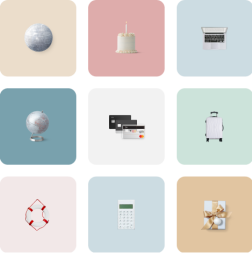
The 5 European countries closest to a cashless future
Is your country headed for a cashless future? The shift to a cash-free society may happen sooner than you think!
6 min read
Before COVID-19, many countries were already heading towards a completely cashless future. But, the increase in contactless payments and online shopping triggered by the pandemic saw a huge shift from cash to cashless payments globally—but just not at the same speed. Even in Europe, payment preferences still vary wildly. But, there’s a handful of countries that are leading the cashless revolution. Here are the top 5 European countries closest to a cashless future.
The 5 most cashless countries in Europe
Within Europe, there’s a huge divergence of preference when it comes to paying with cash. In 2019, Austrians withdrew a staggering €140 a week from ATMs, with Norwegians taking out just €35. While in 2020, 96% of the Icelandic population used online banking, compared to only 9% in Romania.
However, working out exactly which European countries are the closest to a cashless future is tricky for two reasons:
- Physical cash is untrackable
- There isn’t a Europe-wide uniform method for tracking cashless payments
That being said, there’s still a wealth of reliable data out there that gives us a solid understanding of exactly which European countries are leading the race to a cashless future. Read on to discover what we found out.
The bank account that gives you more control

Sweden
The first European country to issue banknotes, Sweden looks set to be one of the first European countries to get rid of them. With less than 32 ATMs per 100k people, over 98% of citizens owning a debit card, and one of the top countries for contactless mobile payments, physical cash is fast becoming a relic of the past in Sweden.
The move to a cashless Swedish society is even encouraged by law. In Sweden, it’s fully legal for a merchant to refuse cash payments. This essentially forces consumers to purchase their goods via a cashless payment method. This combined with the fact that most Swedish banks don’t handle cash transactions in-branch and ATMs are a scarce commodity, it’s little wonder that according to the Swedish Central Bank, Sweden will be a fully cashless country by 2023!
Norway
Norway is the European country closest to a cashless future, according to data from the World Bank. Nearly all Norwegians (98%) own a debit card and Norway's central bank says that only 3–5% of all point of sale transactions were carried out with physical cash—with three out of every four card transactions being contactless. What’s more, over 95% of the population use mobile payment apps—and as of 2020, apps were the most popular way of transferring money peer-to-peer, accounting for nearly 80% of all transfers.
However, Norway’s shift to becoming a fully cashless society has concerned some senior government officials. In 2021, the Finance Ministry requested that Oslo’s Financial Supervisory Authority establish a plan that guarantees banks will still offer physical cash to customers. This comes as a backlash to many Norwegian banks denying that it’s their responsibility to offer cash services, as has been the case in Sweden.
An interesting by-product of heading towards a cashless future is an increased focus on digital currencies. In April 2021, Norway’s central bank publicly announced that it was researching digital currency options to help support the switch to a cash-free society.
Budgeting made simple

The Netherlands
According to GlobalData, the Netherlands card payments market is projected to grow by 7.7% by the end of 2021. Already well-established as a country where it’s easy to be cash-free, 91% of the Dutch use banking apps—with 90.5% of all card payments made with debit cards in 2020. However, there’s a hesitancy towards using credit cards due to a cultural unease regarding debt.
Interestingly, the Netherlands is the leading European country for cashless smartwatch payments, which account for over 33% of total smartwatch transactions in Europe. This could be, in large part, due to the fact that two of the Netherlands’ biggest banks are compatible with both FitBit and Garmin smartwatches.
Finland
The Bank of Finland has predicted that it will be an entirely cashless country by the end of 2029—and there’s a lot of data to back up this claim. With 98% of all Finns owning a debit card and 63% owning a credit card, nearly the entire population can pay without using cash. Finland’s cashless transactions reached a staggering €50bn in 2018 and are projected to reach highs of nearly €60bn by 2022.
80% of Finns prefer paying by debit card when in a brick-and-mortar store. This number is only increasing, with a forecasted 0.8% decrease in cash payments projected for 2022. However, not all Finns are convinced that a cashless future is the way to go. 61% don’t believe in the concept of a cashless future, 13% are unsure about it, and only 26% believe that going completely cashless would be beneficial for Finnish society.
The United Kingdom
The UK was an early adopter of digital payment methods—and today, contactless payments are one of the most popular ways to make a payment. As of 2020, 27% of all payments were contactless, which amounted to a sizable 9.6 billion payments!
This marks a significant change in behavior from just a decade ago. In 2011, cashless payments accounted for 50% of all transactions, whereas today five out of six British payments are cashless. COVID-19 also played a role in the British shift toward going cash-free. A study by UK Finance reported a 35% decrease in cash payments in 2020, largely due to the pandemic. The paper also revealed that 79% of adults use online banking and 54% use mobile banking apps proving that the UK is well on its way to becoming cashless.
Why are Nordic countries among the most cashless in the world?
With Sweden, Norway, and Finland all included in this list, it’s clear that the Nordic countries are leading the way when it comes to going cashless—but why is that? Well, it might have something to do with trust. Culturally, the Nordic countries tend to have more trust in their governments and large institutions such as banks. Thus, they believe that their money is just as safe, if not safer, in the hands of a digital bank than it is in their own.
Combine that with a high level of computer literacy even amongst older generations, and banks that proactively restructured to accommodate for advancing digital technologies, and you have a recipe for a fully cashless Nordic region in the not-too-distant future!
Your money at N26
Want to be part of the cashless revolution? As a fully digital bank, N26 let’s you manage your finances 100% online. Plus, every single account, including the N26 Standard account comes with a virtual Mastercard, so you can make payments with just a tap of your smartphone. Secure, simple, and hassle-free, open your N26 account in a matter of minutes.
Find similar stories
By N26
Love your bank
How modern couples manage joint finances
6 min read
Related articles
These might also interest youBeyond Veganuary: How a greener diet could lead to a greener wallet
Reaping the financial rewards of a more plant-powered life.
How modern couples manage joint finances
Whether you’re polyamorous or monogamous, married with kids or parenting pets, money matters in every relationship. But the way partners organize their finances can differ greatly.
Women and financial literacy: Closing the gender gap
Financial literacy is a critical tool for women to build wealth and secure their future. However, many women lack the knowledge they need to get ahead. We explore why that’s the case!


